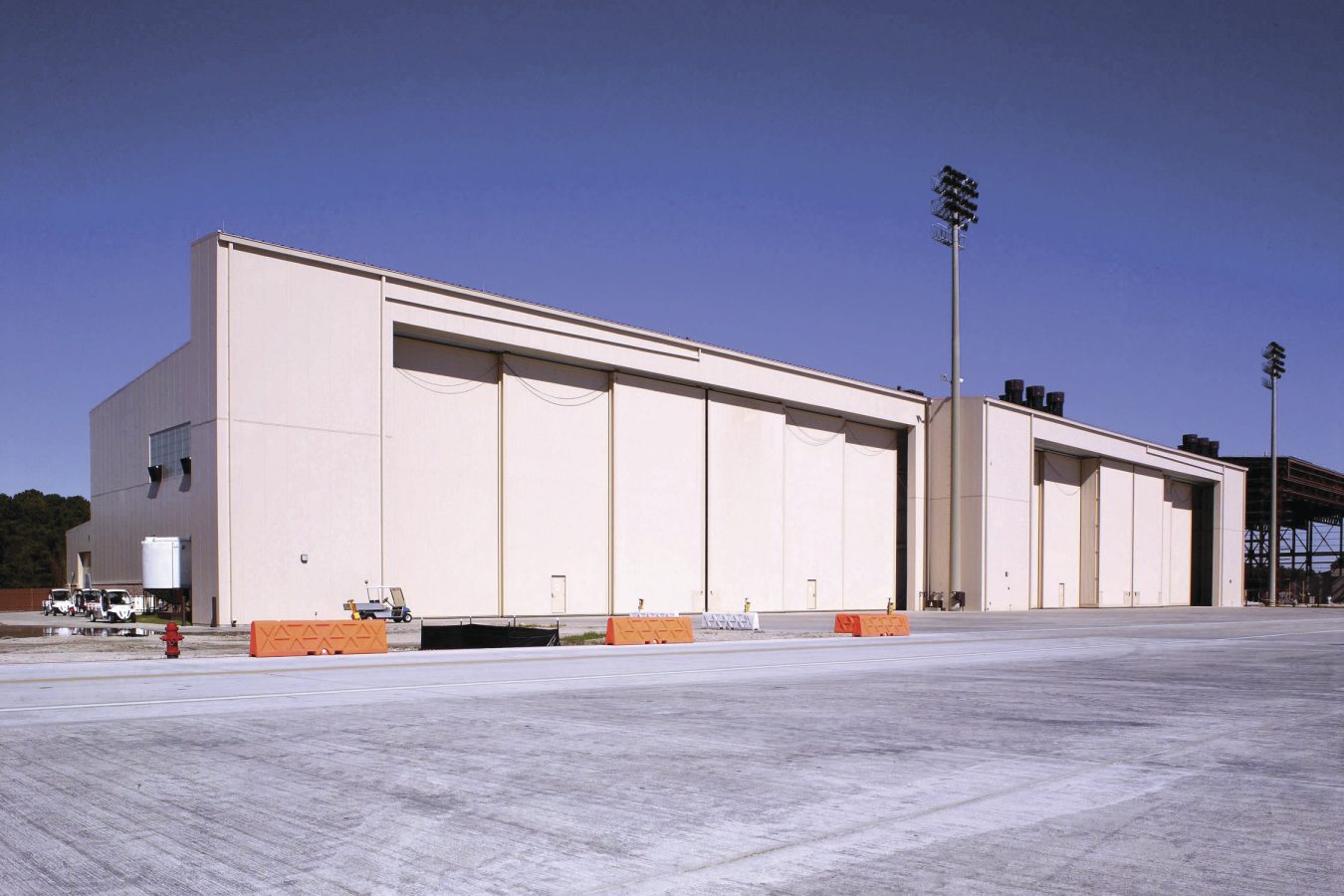Pope Field North Carolina - This article uses simple URLs that are non-informative and subject to link rot. Consider turning these into full citations to keep the article verifiable and maintain a consistent citation style. There are many templates and tools for formatting such as Reflinks (docs), reFill (docs) and Citation bot (docs). (September 2022) (Learn more about how and why you can remove this message template)
Soldiers from the U.S. Army's 82nd Airborne Division prepare for a mass parachute jump from a U.S. Air Force C-130J Hercules during an exercise at Pope Field in 2013.
Pope Field North Carolina

35 ° 10'15 "N 79 ° 00'52" W / 35.17083 ° N 79.01444 ° W / 35.17083; -79.01444 Coordinates: 35 ° 10'15 "N 79 ° 00'52" W / 35.17083 ° N 79.01444 ° W / 35.17083; -79.01444
Let Me Cater To You Restaurant Menu In Pope Field, North Carolina, Usa
Pope Field (IATA: POB, ICAO: KPOB, FAA LID: POB) is a United States military installation located 19 km (12 mi) northwest of the Fayetteville central business district in Cumberland County, North Carolina, United States.
Formerly known as Pope Air Force Base, the facility is currently operated by the United States Air Force through a Memorandum of Agreement (MOA) and Inter-Services Support Agreement (ISSA) with the United States Army as part of Fort Bragg.
In 1918, Congress established Camp Bragg, an Army field artillery site named for Confederate General Braxton Bragg. A year later, a runway was added for air traffic. Officially established by the War Department in 1919, "Pope Field" is one of the Air Force's oldest installations.
Pope AFB was named for First Lt. Harley Halbert Pope, who died on January 7, 1919, when the Curtiss JN-4 Jny he was flying crashed into the Cape Fear River. After five years, Camp Bragg became a permanent military post known as Fort Bragg.
Pope Field Community Park
Original operations included photographing the terrain for mapping, carrying mail, and spotting forest and artillery fires. Observation planes and balloons occupied Pope Field for the first eight years. In December 1927, Pope Field was instrumental in developing tactics that would prove critical in shortening World War II.
The first major expansion of Pápa's facilities took place in the 1930s. In 1935, Pope Field received 535 aircraft in one day as the US Army Air Corps conducted large-scale operations on the East Coast. In 1940, paved tracks replaced the land. Most of the parking ramp remained unpaved until after World War II.
The pace of papal activities accelerated with the outbreak of World War II. In the 1940s, the base swelled into a troop carrier training facility, and with the establishment of Parachute Training at Fort Bragg, Pope began to put the "Air" in "Airborne." During the war, air and ground crews trained here with army airborne units in preparation for air and resupply missions.

Hangars 4 and 5 and the Pope Air Force Base Historic District were listed on the National Register of Historic Places in 1991.
North Carolina State Map
After the war, Pope Field became Pope Air Force Base with the creation of the United States Air Force on September 18, 1947. The base served as headquarters for the 10th Tactical Reconnaissance Group, activated on 3 December 1947 at Pope, as the 10th Reconnaissance. group was renamed the 10th Tactical Reconnaissance Group in June 1948. At Pope, the 10th flew the P/F-51 Mustang, as well as its photographic reconnaissance version, the F-6, later designated the RF-51. The operational squads were:
The 10th TRG was inactivated on 1 April 1949 and the receiving unit at Pope was the 4415th Air Base Group. The base's primary mission was to train advanced air traffic controllers for the Korean War. The training was conducted by the following operational units:
The headquarters of the Ninth Air Force was in Pápa in August 1950. Transferred 20 Aug 1954 to Shaw Air Force Base, South Carolina.
On 21 September 1954, the 9th Air Force assigned Pope to the 464th Airlift Wing, a tactical air command unit, which relocated from Lawson AFB, Georgia. The 464th's known operational squadrons were:
A Usaf Ec 135 Stratotanker Aircraft Assigned To The 55th Wing At Offutt Air Force Base, Nebraska Is Scrapped For Salvage After Sitting On The Ramp At Pope Air Force Base, North Carolina
The 464th (all troop transport units were redesignated "Tactical Airlift" on 1 August 1966) provided troop and cargo airlift, participated in joint air training with Army forces, and in combat exercises in the United States and abroad. The wing conducted aeromedical airlift and humanitarian missions as required. Until its inactivation, the 464th often deployed two or more squadrons overseas simultaneously supporting military operations in Central America, Europe, the Middle East, the Far East, and Southeast Asia.
The 464th received the Mackay Trophy for the dramatic RED DRAGON/DRAGON ROUGE and BLACK DRAGON/DRAGON NOIR hostage rescue missions in the Congo in 1964. The wing led the deployment of the 82nd Airborne in the Dominican Republic from April to 1 September 1965. In 1966, the 464th was responsible for training C-130E crew members to work in troop transport units in the United States and overseas.
During his papal tenure, a significant period of expansion of the facilities took place. The main runway, taxiways, and ramp were extended to support the 464th Fairchild C-119 "Flying Boxcar" operations. During the 1950s and 1960s, aircraft modernization was the primary task at the North Carolina facility. The Fairchild C-123 Provider began replacing the C-119 in 1958, and in 1963 the first C-130 Hercules, appropriately named "The North Carolina," arrived.
In August 1971, the 464th was inactivated and the 317th Tactical Airlift Wing was administratively transferred to Pope AFB from Lockbourne AFB, Ohio. The 317's known operational squadrons and tail codes were:
Fort Bragg Roads And Buildings
The 317th TAW flew the C-130E aircraft. After June 1972, squadron tail codes were standardized with "PB", short for (Pope/Bragg).
Fort Bragg's landing zones, low-level routes, and ground landing zones have become familiar to many in Southeast Asia. The training received during the North Carolina operations greatly improved the combat readiness of the crew. The wing pioneered the use of the Airborne Adversary Delivery System (AWADS) in active combat operations in Southeast Asia, and trained Europe-based NATO aircrew in the same techniques following American involvement.
During the Vietnam War, the Pope was the destination for the corpses of soldiers in Southeast Asia. The identification confirmed that the bodies were for burial in their hometowns or in the appropriate military cemeteries.
On 1 December 1974, the Military Airlift Command assumed responsibility for tactical airlift and assumed command of Pope along with all assigned units. Under MAC, the 317 two-digit aircraft tail code has been removed.
Pope Afb (fayetteville)
On 1 January 1992, the 317th TAW was reassigned to the Air Mobility Command and the wing was redesignated the 317th Operations Group as part of the new 23d Composite Wing (23d Wing) at Pope. On June 1, 1992, the 317th OG was inactivated. As part of the deactivation, its operational squadrons were disbanded as follows:
The lessons of the 1990-1991 Gulf War led defense planners to conclude that the construction of the military establishment created a number of command and control problems. Sior planners considered many options before agreeing to the final conclusion: the consolidation of most strategic and tactical air assets and the transfer of combat airlift squadrons from the Military Airlift Command due to their combat orientation. In addition, the number of Air Force wings was reduced by about a third to reflect the financial constraints of the post-Cold War environment.
These changes led to the activation of Pope AFB on 1 June 1992 for the new Air Combat Command. Additionally, the 317th TAW was integrated into the new 23rd Wing on 1 June 1992 as the 23rd Fighter Wing at Gland Air Force Base. Louisiana came to Pope after the closure of Gland's Base Realignmt and Closure (BRAC) in 1991.

In April 1992, the A/OA-10 Thunderbolt II aircraft were transferred to the 353d FS / 354th FW 75th Fighter Wing at Myrtle Beach AFB, South Carolina, before the wing was inactivated and the base closed in January 1993. In June 1992. In 1993, 40 F-16C/D blocks were transferred to the 74th Fighter Squadron from the 347th FW at Moody and the 388th FW at Hill.
Military Bases In North Carolina
In December 1992, C-130s of the 2nd Airlift Squadron deployed to Mombasa, Kya State to participate in Operation PROVIDE RELIEF. The planes and crews delivered tons of food and other relief supplies to small airstrips across Somalia. The C-130 Flying Tigers of the 23rd Wing were also tasked with assisting with other humanitarian relief efforts, including Hurricane Andrew in Florida. They also delivered relief supplies to Bosnia and Herzegovina and flew aid services to Sarajevo for over 28 months.
On March 23, 1994, two 23rd Wing aircraft, an F-16 and a C-130, collided on the base's runway. After the F-16's two crew ejected from the damaged fighter, the drone crashed into an aircraft parking ramp and hit a C-141 transport aircraft parked on the ramp. The resulting fireball and burning debris killed 24 US Army paratroopers waiting nearby to load supplies and injured nearly 100 more in the so-called Gre Ramp disaster.
In May 1994, the 41st Airlift Squadron was deployed
Field trips north carolina, art pope north carolina, south carolina field trips, old field south carolina, north carolina football field, hd pope funeral home rocky mount north carolina, oil field jobs in north carolina, pope north carolina, coastal carolina football field, carolina panthers field passes, pope aaf north carolina, ed pope north carolina
0 Comments